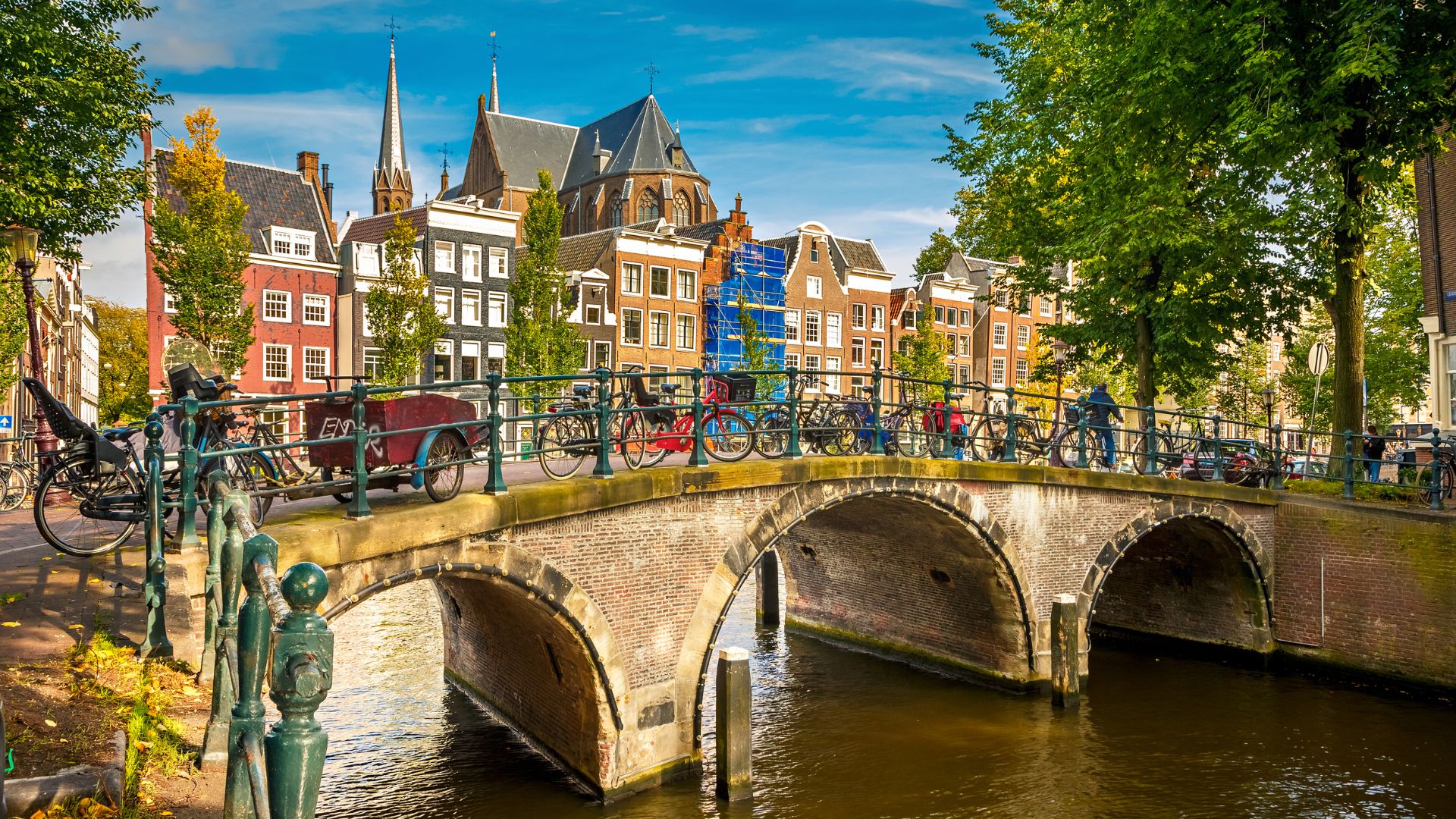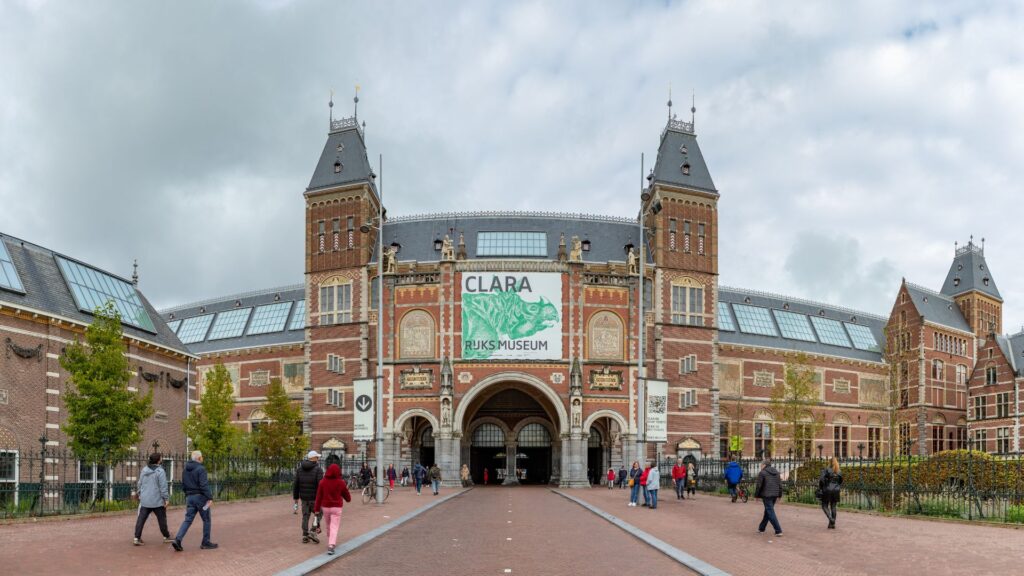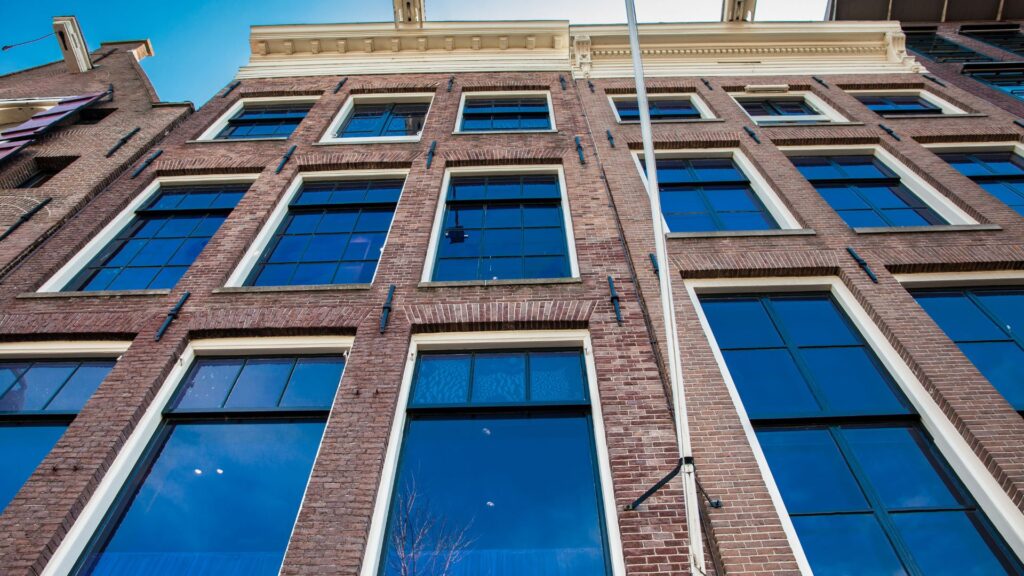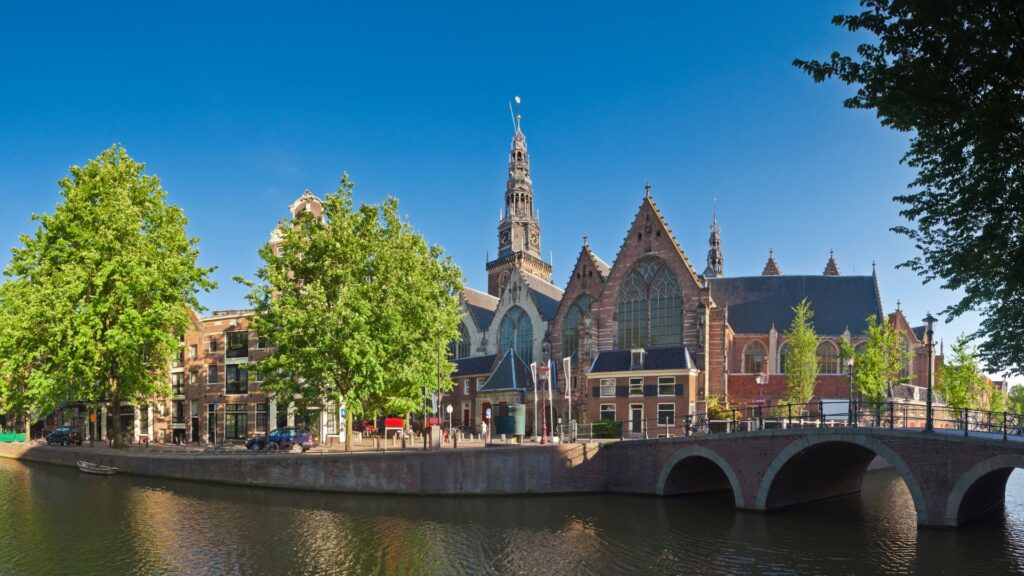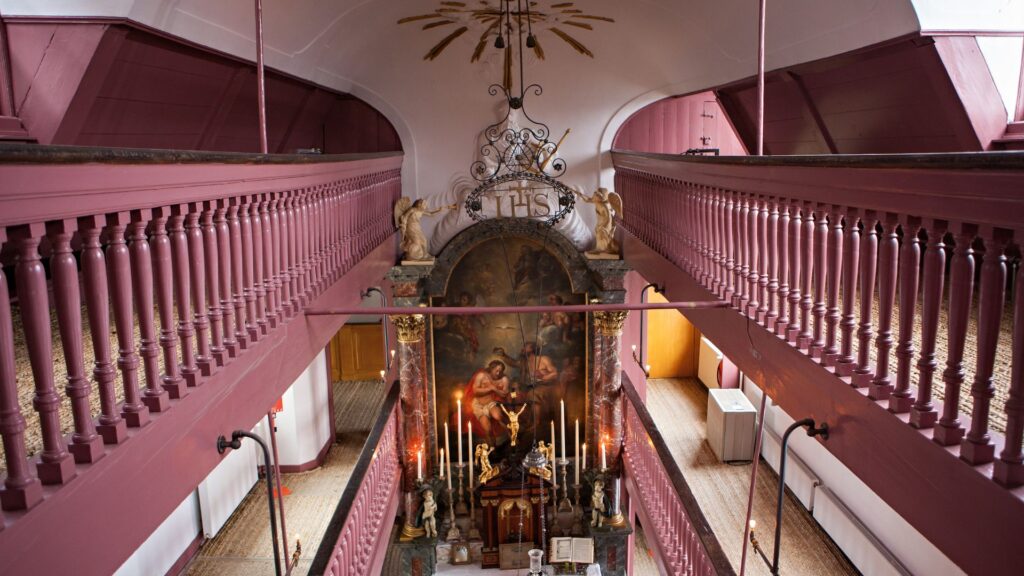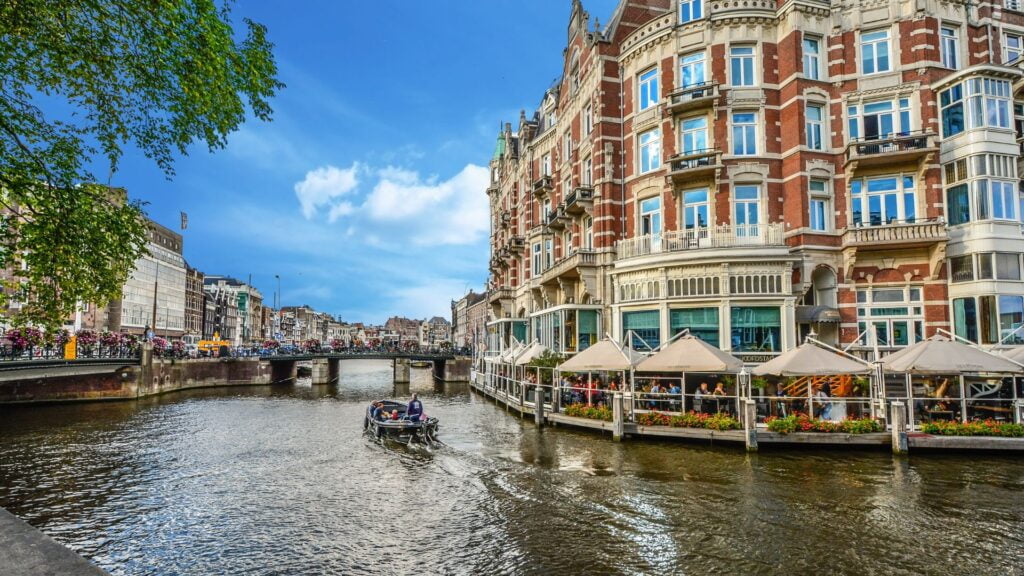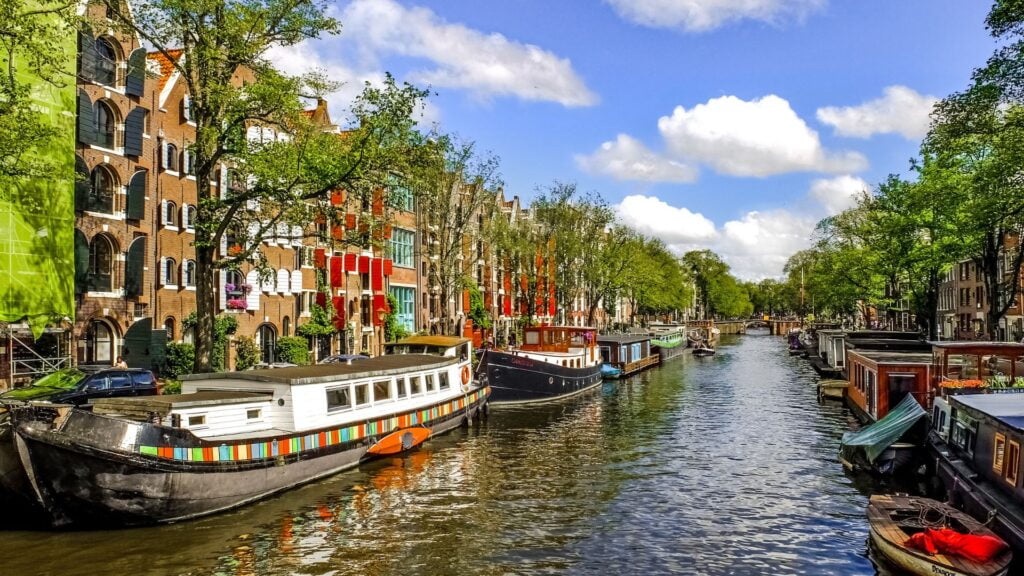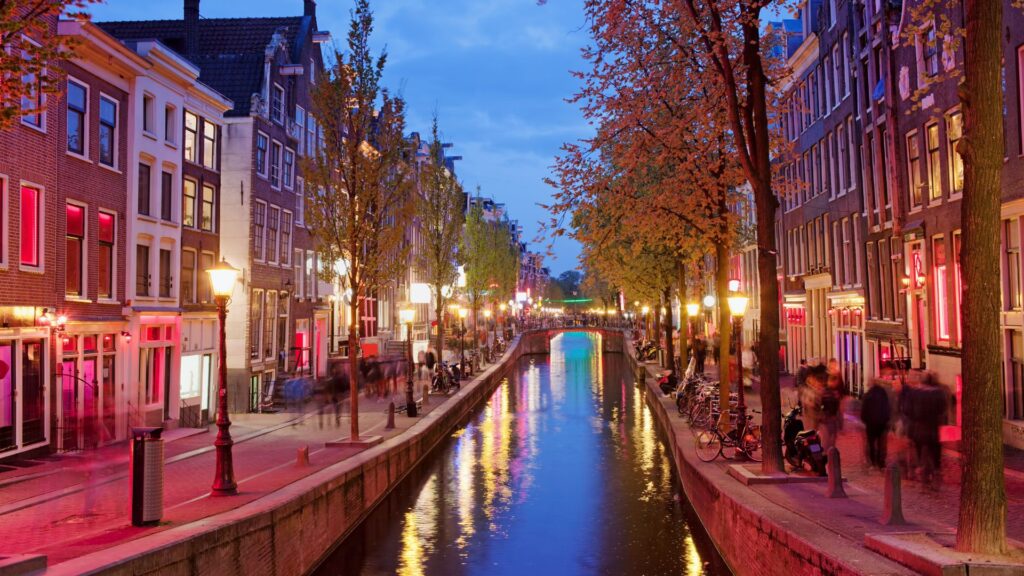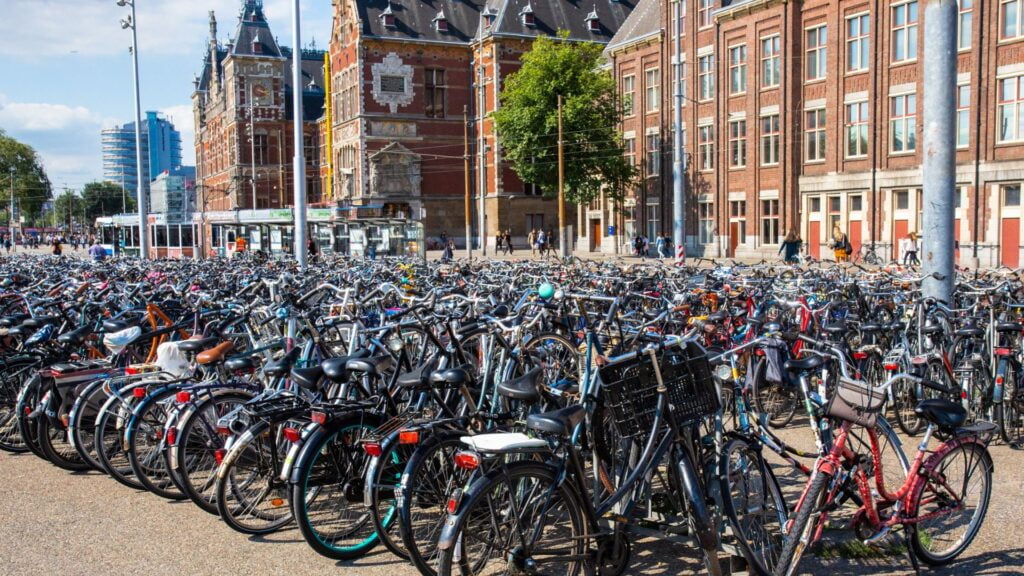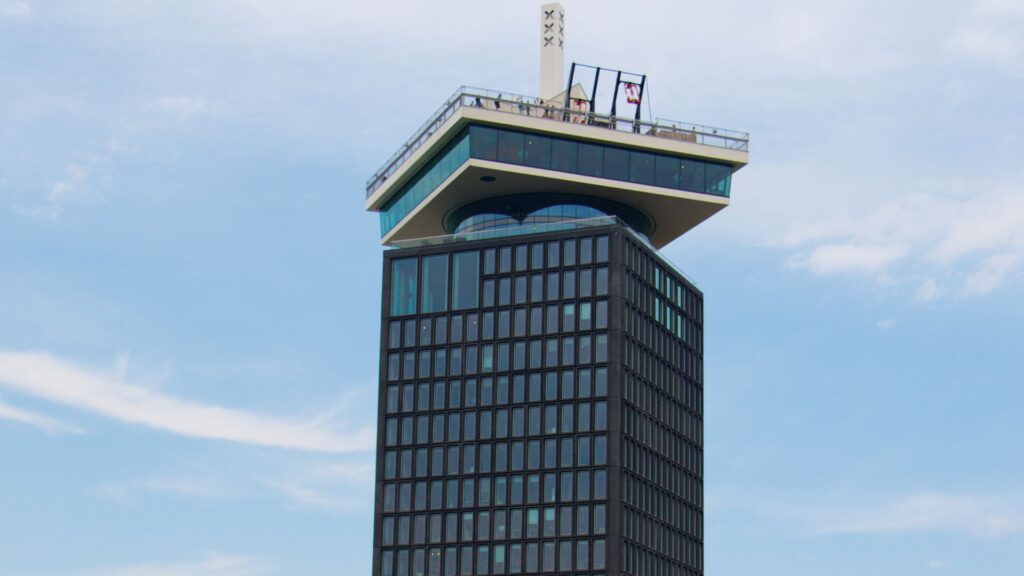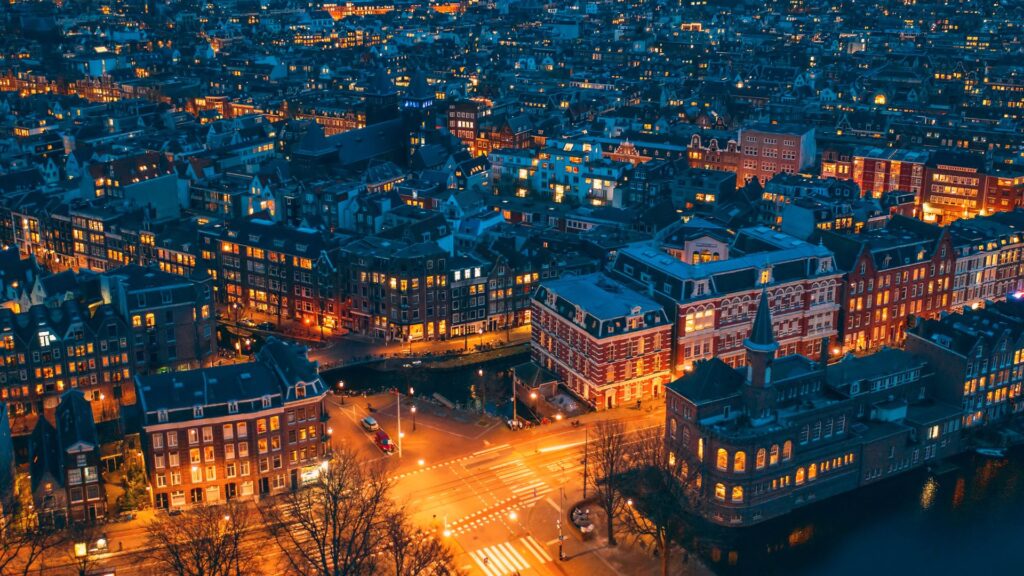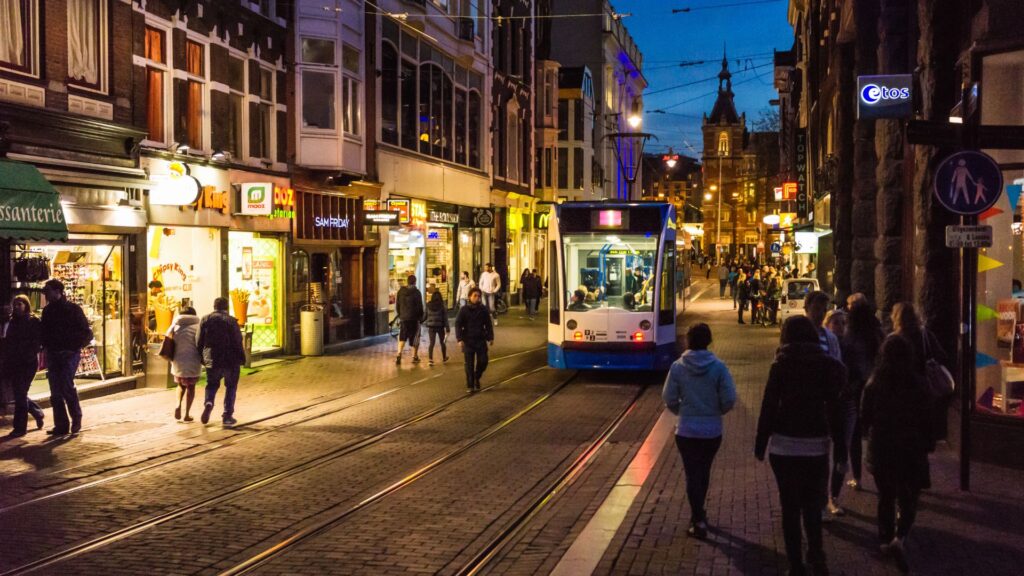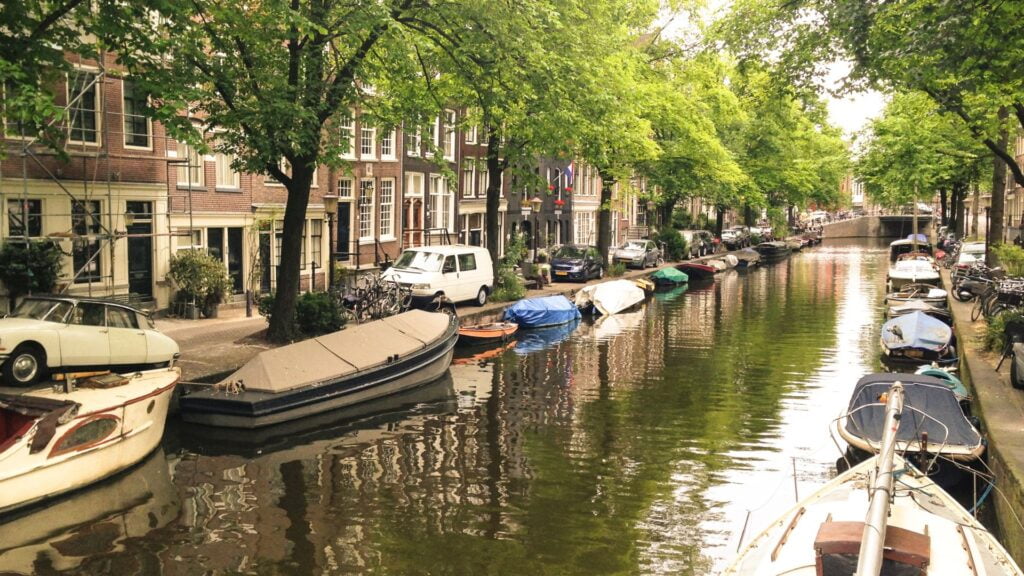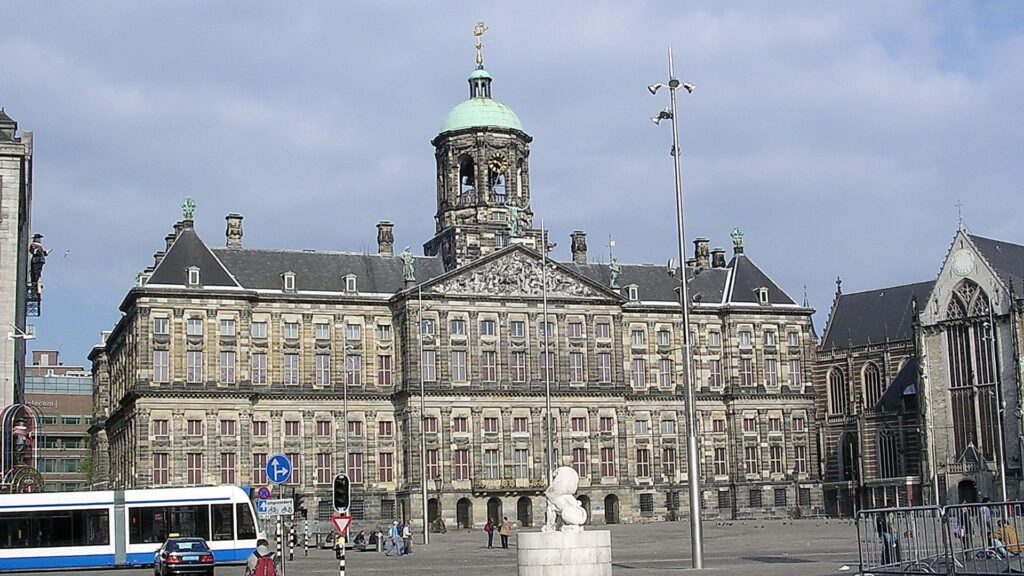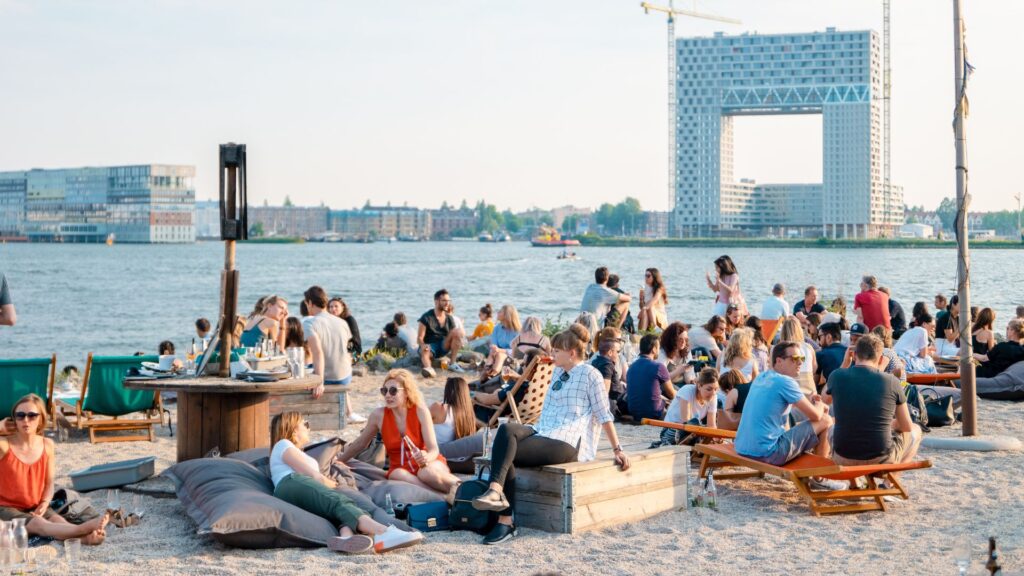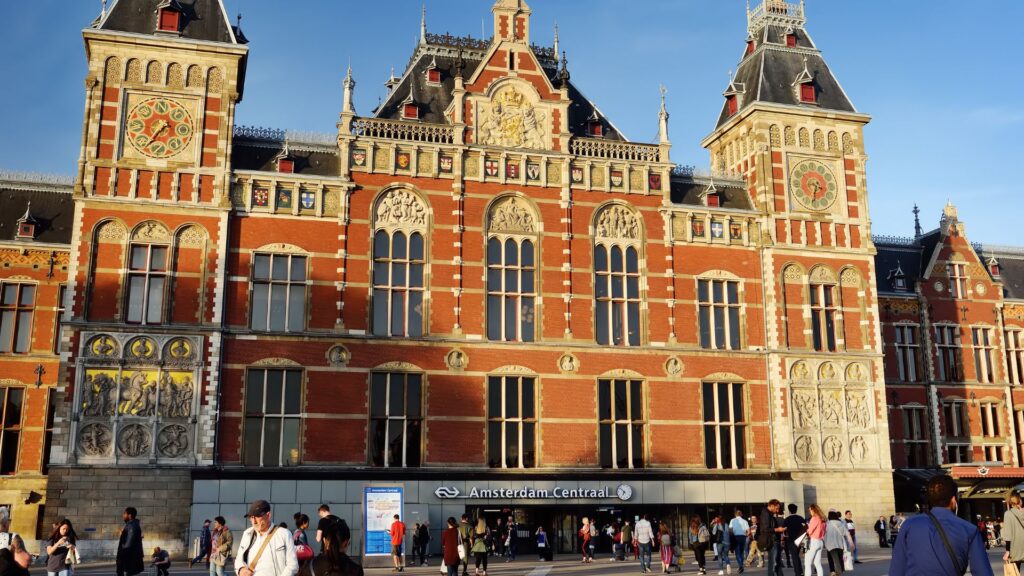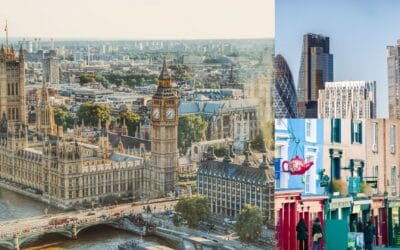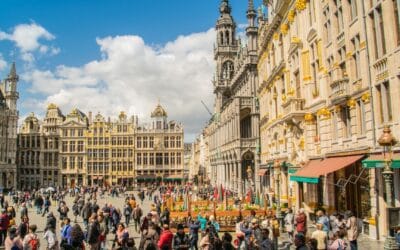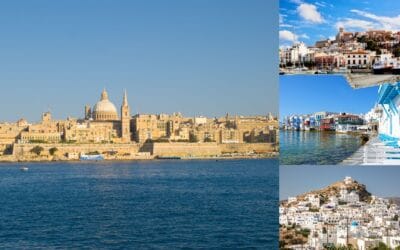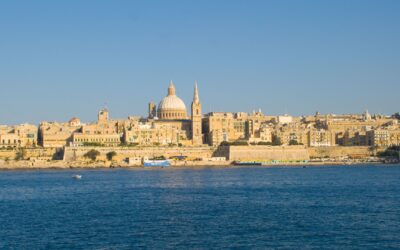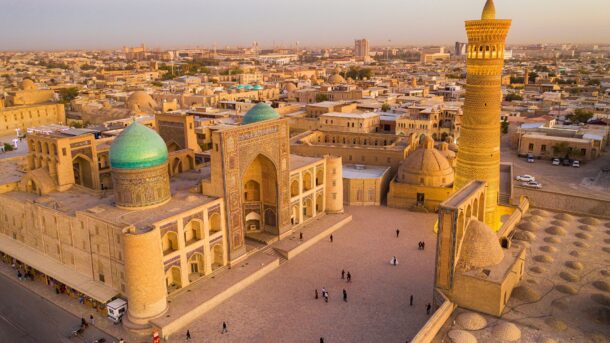Do you want to spontaneously hear or at least read “Welcome to Amsterdam”? You can increase the chances of this happening by doing a city break in one of the world’s most famous cities. And since you’re at it, be ambitious and make a good plan that will resonate with your interests. After all, regardless of whether you’re a history buff, a hipster, a night owl, or a combination of these, Amsterdam has something for you. Here’s an outline for an Amsterdam weekend gateway plan that matches your vibes.
A few notes on Amsterdam
How many people who arrive in Amsterdam know anything about the city besides the most obvious things? Probably not many. But you will.
The city’s origins date back to the 13th century when it began as a small fishing village. Amsterdam rose to prominence starting in the 17th century, during a period known as the Dutch Golden Age. The Dutch vast trading network made this city one of the wealthiest in the world. Amsterdam’s prosperity declined in the 18th century due to wars and economic downturns but recovered during the 19th century, particularly after the establishment of the Kingdom of the Netherlands in 1815.
During World War II, Amsterdam was occupied by Nazi Germany, leading to significant hardships and the tragic deportation of a large portion of its Jewish population, including the well-known diarist Anne Frank. Of course, the post-war period saw a revival and growth, with the city becoming a financial and technological hub and a top tourist destination.
Amsterdam is known for picturesque canals, pretty architecture, and a progressive, laid-back attitude. The city has probably become a major tourist destination largely due to being one of the world’s first cities to stop prosecuting the use of recreational cannabis use and to regularize prostitution. These policies were motivated by the desire to discourage the consumption of hard drugs and provide a safe space for sex workers While more and more jurisdictions from around the world implement similar policies and Amsterdam was not even the first to do so, it remains strongly associated with them.
It is probably little known that recreational cannabis use is not technically legal in the Netherlands, while it is so in many parts of the US, as well as in Canada and Germany, to name a few. More specifically, cannabis, while still technically illegal in the Netherlands, possession and sale of small amounts are accepted under specific conditions.
In other words, when you think of Amsterdam, you will most likely think of coffeeshops and the Red Light District, despite the fact that, nowadays, other jurisdictions have similar regulations. Of course, there’s much more to this cool city than nicely decorated coffeeshops, and to understand it, you need to know more about its background.
First, let’s talk about the channels, which are everywhere. Amsterdam is located below sea level, making effective water management a must. The canals were originally dug to control water levels, drain swampy land, and protect the city from flooding. This system of canals, dikes, and water pumps allowed the city to expand and maintain dry land suitable for building and agriculture. It also allowed merchant ships to dock directly at warehouses and homes, making the transportation of goods efficient and boosting the city’s economy.
The layout of Amsterdam’s canals was part of a deliberate urban planning effort. The famous canal belt (Grachtengordel), which includes the Herengracht, Keizersgracht, and Prinsengracht, was developed in the early 17th century. The Amsterdam Canal Ring was recognized by UNESCO in 2010 and it reflects, to some extent, the Dutch Golden Age’s prosperity and Amsterdam’s role in world trade during this period. The buildings along the canals, many of which are well-preserved from the 17th century, showcase the architectural styles and urban aesthetics of the time, with common features being gables and narrow facades.
Second, let’s talk about the city’s deserved reputation as laidback and liberal. Amsterdam is part of the Netherlands, which, socially-wise, resembles other nearby countries for reasons that obviously correlate with development factors. That being said, the city also owes some of its openness to the fact that it was a focal point of the countercultural movement in the 1960s and 1970s. This era saw the rise of the Provo movement, a group of anarchists and artists who advocated for social change through provocative and humorous actions. The Provos influenced many aspects of Dutch society, from urban planning to drug policy, and helped cement Amsterdam’s reputation as a liberal and progressive city.
The city is also one of the first in modern history to develop a high-level openness towards same-sex relationships. For example, COC Nederland is said to be the world’s oldest existing LGBTQ organization and was founded in Amsterdam in 1946. In 2001, the Netherlands made history by becoming the first country in the world to legalize same-sex marriage with the first same-sex marriages being celebrated in Amsterdam.
Some would point out that Amsterdam has, in fact, been more liberal than most other places in the world for a long time. For instance, in the 16th and 17th centuries, the city became a hot spot for religious refugees. During the Reformation and subsequent religious wars, many Protestants, Jews, and other religious minorities sought refuge in Amsterdam. This influx led to a culture of tolerance by the era’s standards, as the city accommodated a diverse population with varying beliefs.
The Dutch Golden Age also saw a flourishing of arts and sciences, with figures like Rembrandt and Spinoza contributing to the cultural scene. This period established Amsterdam as a center for free thought and expression, again, within the limits of the time period.
Third, the bikes! They are everywhere! The healthier and sustainable Dutch approach to transportation can be immediately noticed after a few minutes in the Netherlands. The Dutch became bicycle addicts in the early 20th century. After World War II, there was a significant shift in urban planning in many parts of the world, including the Netherlands, towards accommodating automobiles.
However, in the 1960s and 1970s, Amsterdam experienced a surge in bicycle use due to increasing traffic congestion, pollution, and road fatalities. This period saw a rise in grassroots movements advocating for safer streets and more cycling infrastructure. Notable among these movements was the Provo movement, which promoted the “White Bicycle Plan,” advocating for free, public bicycles to reduce car traffic and pollution. In response to public pressure and the energy crisis of the 1970s, the Dutch government began investing heavily in cycling infrastructure. This included building extensive networks of bike lanes, implementing traffic calming measures, and creating bike parking facilities. The result? The country with more bicycles than people (23 million bicycles vs 17 million people)!
Finally, let’s talk about attractions. Amsterdam is also a city that was home to important artists and has an important marine history. As such, it’s also the place you want to visit if you are a fan of Rembrandt, Vincent van Gogh, or maritime artifacts, among others. With these considerations in mind, let’s take a look at what the city has to offer for each “personality” in you.
Amsterdam for the historian in you
Is part of You a historian nerd or a historical architecture nerd? Then you’ll most likely enjoy Amsterdam even if you ignore everything else about it. Here are some attractions you might care about.
Rijksmuseum – the most famous museum in the Netherlands
The most visited museum in the Netherlands has over 8,000 artworks, including what many would call masterpieces by Rembrandt and Vermeer. To be more specific, the Rijksmuseum, established in 1800, is an expansive museum dedicated to Dutch art and history. Walking through its halls is said to be like traversing a timeline of Dutch culture. The museum’s most famous piece, “The Night Watch” by Rembrandt, is a colossal and dynamic painting that draws millions of visitors each year. The collection also includes Vermeer’s “The Milkmaid,” which is said to be an example of the artist’s mastery in depicting light and texture. Each room in the Rijksmuseum is meant to reflect different periods, from the Middle Ages to contemporary art. While I’m not a fan of painting, I would still have some curiosity to visit Rijksmuseum. You can do this by yourself or in the company of a Rijksmuseum guided tour.
The entry of the most visited museum in the Netherlands
Anne Frank House – The house where Anne Frank hid for two years
If you’re OK with exposing yourself to the darkest moments in contemporary history, you may want to visit the Anne Frank House. The building, located at Prinsengracht 263, is where Anne and her family hid from the Nazis for two years. The museum is divided into the main house and the secret annex, with the latter remaining unfurnished at the request of Otto Frank, Anne’s father, to reflect its state after the family was arrested. The annex, concealed by a hinged bookcase, provided a secluded refuge that Anne described as relatively luxurious compared to other hiding places. By walking through the cramped quarters, you will see the original red-checked diary Anne received for her 13th birthday and the walls adorned with pictures she used to brighten up her room. If you want to find out more about how life was in Amsterdam under the occupation of the Nazis, consider taking this highly rated Anne Frank Walking Tour that is offered in English or German.
Facade of the Anne Frank house
Van Gogh Museum – Home of the largest collection of the artist’s works
The Van Gogh Museum offers a swirling dive into the mind of what many call one of the greatest artists ever. The collection includes more than 200 paintings, 500 drawings, and 700 letters by Vincent van Gogh, allowing visitors to trace his artistic development. Key pieces like “Sunflowers” and “The Bedroom” are displayed alongside lesser-known works, providing a comprehensive view of his life and career. The museum also features temporary exhibitions that explore various aspects of 19th-century art history. If museum tours are your thing, there’s a Van Gogh Museum guided tour you might be interested in.
Amsterdam Museum – A place of interactive history lessons
The Amsterdam Museum is perfect for learning about the city’s transformation from a small fishing village to a bustling trade center. Interactive exhibits make history come somewhat alive, with displays covering topics from medieval times to the modern day. The museum’s collection includes archaeological finds, paintings, and artifacts that illustrate Amsterdam’s growth and its role in global trade, politics, and culture. Special exhibitions often focus on contemporary issues and how the city continues to evolve. Feel free to check it out and see if they tell you some of the things we also told you in a hopefully fun, interactive way.
Oude Kerk: A gothic beauty in the Red Light District
Want to see the oldest building in Amsterdam? Then head over to Oude Kerk. Located in the heart of the Red Light District, this pretty Gothic church dates back to 1306. You will notice impressive stained-glass windows and a wooden vaulted ceiling that’s considered the largest in Europe. The church has been a site of worship, a refuge during floods, and even a place of execution. Ehm. Today it’s a more cheerful place, hosting art installations and cultural events.
Oude Kerk
Rembrandt House Museum: Yes, him again
If you haven’t had enough of Rembrandt at Rijksmuseum or didn’t even go there, consider stepping into the Rembrandt House Museum, the former home and studio of Rembrandt. The house, where Rembrandt lived and worked from 1639 to 1658, has been meticulously restored to its 17th-century appearance. You will see rooms filled with his etchings, drawings, and personal artifacts. Demonstrations of etching techniques and regular exhibitions are meant to provide intel into Rembrandt’s creative process and his impact on art.
Ons’ Lieve Heer op Solder – That place where Catholics used to hide for worship
Ons’ Lieve Heer op Solder (Funnily meaning “Our Lord in the Attic”) used to be a hidden church in an attic. This clandestine church, built in 1663, allowed Catholics to worship secretly when public Catholic services were banned. The preserved church is hidden within a typical canal house and features an ornate altar, pews, and a confessional, all within the confines of a domestic attic space. I would say this is quite an interesting attraction; after all, you don’t see a church in an attic every day.
Inside Ons’ Lieve Heer op Solder
National Maritime Museum – A place filled with maritime artifacts and where you can explore the replicas of some large ships
Finally, there’s the National Maritime Museum. As a historical naval power, it’s no surprise that Amsterdam has one of the world’s largest maritime museums. Housed in a former naval storehouse built in 1656, the museum has historic ships, maps, and many nautical artifacts. For example, you can see the maps that were used for exploring the globe hundreds of years ago (when even more people thought it was flat), as well as historical navigation tools such as astrolabes, compasses, and sextants. One cool thing you can do at the museum is explore the replicas of three ships- the East Indiaman Amsterdam, powerhouse steamship Christiaan Brunings from 1900, and the Royal Barge from 1818.
This beauty is called East Indiaman Amsterdam
The Canal Ring – Locally known as Grachtengordel
The innermost canal, Singel, once served as Amsterdam’s defensive moat. It is lined with old houses and notable buildings like the Munttoren and the Ronde Lutherse Kerk. The Bloemenmarkt, the world-famous floating flower market, is also located on Singel.
Next is the Herengracht, often referred to as the “Gentlemen’s Canal,” which was home to the city’s elite merchants and regents. The most prestigious section, known as the Golden Bend, features opulent mansions that now house museums and cultural institutions.
The Keizersgracht, or “Emperor’s Canal,” named in honor of Emperor Maximilian I, is the widest canal in Amsterdam. If you go during winter, you might find the canal frozen and converted into an ice-skating spot.
Prinsengracht, named after the Prince of Orange, is perhaps the most famous canal, home to landmarks like the Anne Frank House. Here you will also find several cafes and houseboats.
You can obviously explore the ring on one more more boat tours. One of the most popular options is the Amsterdam Open Boat Canal Cruise with Local Guide. If you can, take a boat tour both during the daytime and in the evening. If you’re not sure why, imagine gliding through the tranquil waters as the city’s historic architecture and bridges are illuminated by soft lights.
This boat may be available for you
Some boats in Amsterdam also offer accommodation
Now, since you’re probably there only for a weekend, you might wonder if there’s time to see it all. I would say 2 or 3 days would be enough for visiting each of these spots all while also exploring large chunks of other locations I talk about in the next section. But museums do take time. So, if you believe you can’t see it all or don’t want to feel like you’re rushing it, pick what you find the most interesting and leave other places for your next trip to Amsterdam.
Amsterdam for the cliché lover in you
Alright, let’s get cliché! If you’re in Amsterdam, you gotta check out the famous coffee shops. Man, these places are legendary. You walk in, and it’s this cozy, chilled-out atmosphere with people from all over the world just hanging out, enjoying Amsterdam’s relaxed vibe.
The Bulldog and Barney’s are arguably the epitome of this culture. Dudee, picture this: you enter The Bulldog, one of Amsterdam’s most iconic coffee shops, and you’re greeted by a cozy ambiance, filled with the sweet aroma of cannabis and the sounds of laughter and conversation. The Bulldog started as a single shop in the 1970s and has grown into a chain with multiple locations, each offering a unique vibe. Whether you’re lounging on a plush sofa or chatting with fellow travelers, the relaxed, friendly atmosphere makes it easy to feel at home. Plus, the staff are always ready to help you pick the perfect strain to suit your mood, whether you’re looking to relax, get creative, or just have a good time.
Then there’s Barney’s, another staple in Amsterdam’s coffee shop scene. You know, this place has been around for decades, known for its high-quality cannabis. Walking into Barney’s is like stepping into a time capsule, with its vintage décor and old-school charm. Some say that the staff are super knowledgeable and can guide you through their extensive menu of cannabis strains and edibles. And let’s not forget about the munchies! Barney’s offers a delicious selection of snacks and drinks to satisfy those cravings.
If you have limited to no experience with cannabis and/or would want to learn more about coffeeshops, feel free to take a look at the Guided Ganja Walking Tour. The guide will not only teach you about the area’s history but also how to roll a joint.
Next up, the Red Light District. Oh, you can’t embrace Amsterdam clichés without exploring this area. Buzzing with energy and history, walking through these ancient streets from the 14th century is surreal. Neon lights, famous red-lit windows, and a unique vibe. The Red Light District, or De Wallen, is a place where history and modernity collide in the most intriguing way.
De Wallen in the evening
This district got its name “De Wallen,” meaning “The Walls,” from the defensive walls that used to surround this part of the city in medieval times. In the 14th century, this area began to cater to the influx of sailors arriving in Amsterdam, with sex work becoming prominent by the 15th century. As you stroll through De Wallen, you can see remnants of this history mingled with modern-day attractions.
One spot is the Prostitution Information Center. Founded by former sex worker Mariska Majoor, this center offers insight into the world of sex work in Amsterdam. You can learn about the history, the regulations, and the day-to-day experiences of the workers in this industry.
Then there’s the Red Light Secrets Museum, housed in a former brothel. This museum gives you a peek behind the curtains, literally. You can sit in a window like the workers do, listen to their stories, and get a sense of what life is like in the Red Light District.
Consider taking a guided tour to get the real lowdown on its history, the lives of the sex workers, and how the area has evolved over the centuries. For example, there’s the Brother Tour with Former Sex Worker, where you can discover the secrets of Amsterdam’s most famous high-end sex club, Bonton. On this tour, you will explore the rooms of the club and listen to the stories of a former sex worker on this Tour de BonTon. If you want to see some of the district’s pubs, you may want to check out The Red Light District and Local Pub Crawl, which is also an opportunity to learn about the oldest pubs in the city.
If you want to see the Red Light District during its peak hours, it’s strongly recommended that you visit it in the evening or the early hours of the night. After all, you’re there only for a weekend so it’s best to leave in the early hours of the day to see other parts of the city and reserve the evening for exploring the city’s most famous neighborhood.
Amsterdam for the hipster in you
If you’re a hipster at heart, you might already know that Amsterdam has a quirky and creative side that’s perfect for you. After seeing much of the cool stuff downtown, consider stopping at YNDSM Wharf. This former shipyard in Amsterdam-Noord is now a creative hotspot, buzzing with street art and cultural events. It’s also home to the STRAAT Museum, the world’s largest street art museum.
The hipster in you will likely love Amsterdam’s bike culture
De Pijp, often referred to as Amsterdam’s Latin Quarter, is also a vibrant place you might like. Places to trek include the lively Albert Cuyp Market and several indie boutiques. If you are still in shopping mode, also go to Nine Streets (De Negen Straatjes), located in the heart of the canal district, as they are filled with vintage stores and designer boutiques.
And after so much chill in hipstery areas, how about you do something that will make your heart pump for a while? Head to A’DAM Lookout in Amsterdam-Noord for some panoramic views of the city and acknowledge that Europe’s highest swing lets you swing over the edge of the building. I dare you to complete this challenge so that you can tell everyone you did something few hipsters have.
Ready for some swinging from A’DAM Lookout?
Assuming the hipster in you will not take full control of your trip, you may care to know that some of these locations are farther away from the city centre. For example, if you’re downtown, Amsterdam-Noord is best to be reached on a free ferry ride that starts near the Central Train Station and lasts for at least 5 minutes. In other words, you will spend some time getting from downtown to Amsterdam-Noord, which is something to take into account if you want to see as many places as possible and you only have 2 or 3 days at your disposal.
Amsterdam for the night owl in you
Amsterdam’s nightlife is quite vibrant, although it’s not large enough to include a huge variety of options. If you’re a beer lover, you might want to start in Brouwerij ‘t IJ. Brouwerij ‘t IJ is charming not only because it’s a famous Dutch brewery but also because it is located in a historic windmill. In other words, you will be drinking Dutch beer in a windmill! And if you don’t have enough beer, you can also check out Proeflokaal Arendsnest, a bar offering over 100 Dutch craft beers on tap and by the bottle. Better yet – it’s a spot with a canal-side terrace.
Downtown Amsterdam at night
The Red Light District, remarked by its illuminated windows, is one spot that gets particularly lively in the evening. We’ll talk about it more in the next section but since we’re in the night owl section, I wanted to point out that you can party in the district with the Amsterdam Red Light District pub crawl. You can combine under one ticket the same pub crawl with a booze boat tour or with the Leidseplein pub crawl. If you want to choose between partying in the Red Light District and Leidseplein with a pub crawl, also take a look at the Leidseplein Pub Crawl.
An interesting pub crawl that I haven’t yet seen in other cities in Europe is the Rainbow Bar Stroll, aka, the gay pub crawl. While in theory, it can be a particularly good option if you are LGBTQ+ or a female who would rather take a break from large crowds of single heterosexual men, note that it only lasts for one hour so it probably doesn’t live up to its potential.
If you would rather crawl throughout the city’s nightlife without an organized tour and you’ll do it for more than one night, consider purchasing the Nightlife Scene “pass” that will give you entrance to more than 20 clubs and include free welcome drinks in 8 of the clubs. And if you want a pass that will also give you access to a canal cruise and a bottle of Prosecco, check out the Complete Nightlife Experience.
Leidseplein at night
Regardless of your choice, it’s quite likely you will spend some time around Leidseplein, which is the epicenter of nightlife. This tourist area has a good range of bars, clubs, and live music venues, with famous spots including the music venues Melkweg and Paradiso. And for something a bit different, go to the Concertgebouw, a place that hosts a variety of performances, from classical music to film soundtracks.
Rembrandtplein is another hotspot for the night owl in you, as it’s known for popular nightclubs and bars. Rembrandtplein is also known for its outdoor scene, where street performers often entertain the crowds. The statue of Rembrandt at the center of the square is a notable landmark, often serving as a meeting point for both locals and tourists.
Where to stay in Amsterdam
One thing you will immediately notice when you plan a trip to Amsterdam is that accommodation is very expensive, something which has a lot to do with the city being small and overcrowded by tourists. Your choice could be guided by accommodation costs, the places where you want to hang out the most or at night, and, why not, your personality. With these considerations in mind, here are a few details on the traits of different parts of the city so that you see if one is a better match for you.
Joordan: A place known for its narrow streets, picturesque canals, and historic charm. A good option if you want a quaint and arguably romantic neighborhood.
Somewhere in Jordaan
De Pijp: Vibrant and diverse, is popular with young professionals and creatives. Home to the famous Albert Cuyp Market and plenty of bars and restaurants, it’s a good place to stay if you want to experience some local vibe.
Oud-West: Located west of Jordaan and north of Vondelpark, this is an area said to be trendy and the place where you’ll find De Hallen – a tram depot that is now a centre of media, culture, fashion, food, drinks, and craft. While this area is quite lively, it is not particularly touristy.
Leidseplein: This is one of the best places to go if you want to be close to the heart of Amsterdam’s nightlife. It’s also one of the loudest places in Amsterdam so if you want to sleep at all, it’s best to search for a room with good noise insulation.
Old Centrum: The historic heart of Amsterdam, Old Centrum includes areas like the Red Light District and Dam Square. Obviously, it’s one of the best areas to be close to all of the main attractions and to get a room with a good view of buildings such as the Royal Palace.
Dam Square and the Royal Palace
Museum Quarter (Oud-Zuid): Home to the Rijksmuseum, Van Gogh Museum, and Stedelijk Museum, this area is a good option if you plan to visit the museums after you just woke up and had a coffee or so. This district is also quieter and more “relaxed” compared to the more central areas.
Westerpark: The place to go if you want to be in close proximity to green spaces. Westerpark is also home to Westergasfabriek – a massive cultural center with restaurants, a cinema, and food trucks.
Eastern Docklands: This part is similar to Amsterdam Noord in that it has a creative and hip vibe. It also has quite a few modern and post-modern buildings, so it’s a good place if you also want to see the new Amsterdam.
Old Jewish Quarter (Plantage): A largely residential and quieter area, the Old Jewish Quarter is a good option if you plan to visit the Artis Royal Zoo and the botanical gardens.
The Nine Streets (De Negen Straatjes): This neighborhood is located within the Canal Belt yet quieter and more laid-back than other central areas. A good option if you want to be close to everything but stay in a somewhat quitter area.
Amsterdam-Noord: As mentioned, this part of the city is known for its creative vibe and is filled with hip restaurants, bars, and cultural venues. Just a short (free) ferry ride from the city center, it is the place to go if you want to spend a lot of time hanging in bohemian spots.
An urban beach in NDSM Wharf
Best time to visit Amsterdam
In my opinion, the best time to visit Amsterdam is during the summer months. This period offers the warmest weather, with temperatures ranging from 17°C to 25°C (63°F to 77°F). Yes, it’s crowded, but isn’t this part of the charm?
Summer is also a time when you can be part of several festivals, including the open-air electronic festival called Awakenings (it happens in July), Amsterdam Gay Pride (a multi-day event in August), and, if you’re into classical music festivals taking place on canals, the Grachtenfestival (also in August).
The summer is also the best part of the year to explore the canals, be it on a boat or a kayak. And since there’s so much water there are also urban beaches and waterfront bars, with popular spots including Blijburg aan Zee and Sloterplas Beach, among others.
Another great time to visit Amsterdam is during King’s Day, on April 27th. This national holiday celebrates the birthday of King Willem-Alexander and is marked by a city-wide party. The streets, canals, parks, and even boats are filled with people dressed in orange, the national color, symbolizing the royal family’s lineage from the House of Orange-Nassau. One of those people can be you! If you happen to be there during the festival, get ready for street markets, concerts, street parties, and boat parades.
Public transportation in and around Amsterdam
Amsterdam Airport Schiphol is one of the largest and busiest airports in Europe, situated about 18 km (11 mi) from the city center. It is well-connected to various parts of Amsterdam and other cities in the Netherlands by train, bus, and taxi. The train station is located directly under Schiphol Airport, making it easy to access.
Trains to Amsterdam Centraal Station run frequently, approximately every 10-15 minutes and the journey takes about 16-18 minutes. A one-way ticket costs €5.90 ($6.42) for 2nd class and €9.33 ($10.16) for 1st class. There’s also the Amsterdam Airport Express (Bus 397), which departs from Platform B17 at Schiphol Plaza and runs every 8 minutes during the day, and every 30 minutes at night (Niteliner N97 service). The bus stops at major locations such as Museumplein, Rijksmuseum, Leidseplein, and Busstation Elandsgracht. A one-way ticket costs €6.50 ($7.08), and a return ticket costs €11.75 ($12.79).
Amsterdam Centraal – Amsterdam’s central train station
Amsterdam has an efficient public transportation system operated by GVB, which includes trams, buses, metro lines, and ferries. Here are some details:
- GVB Tickets: Unlimited travel on trams, buses, metro, and ferries. Prices range from €3.40 ($3.70) for a 1-hour ticket to €9.00 ($9.80) for a day ticket.
- Amsterdam Travel Ticket: Includes unlimited travel on public transport within Amsterdam and between Schiphol Airport and Amsterdam. Prices are €18.00 ($19.70) for 1 day, €24.00 ($26.30) for 2 days, and €30.00 ($32.80) for 3 days.
- I Amsterdam Card: Offers unlimited public transport and free or reduced entry to several attractions and museums. Prices are €60 ($65.60) for 1 day, €85 ($93.00) for 2 days, €100 ($109.30) for 3 days, €115 ($125.70) for 4 days, and €125 ($136.60) for 5 days.
And some extra details on transport passes:
- GVB Day and Multi-Day Tickets: These tickets allow unlimited use of public transport within Amsterdam for the duration of the ticket.
- Amsterdam & Region Travel Ticket: Valid for travel across the greater Amsterdam area, including regional buses and trains. Prices are €21 ($23.00) for 1 day, €31.50 ($34.50) for 2 days, and €40.50 ($44.30) for 3 days.
A few things to know about the Netherlands before you go
Just because you’re in Amsterdam only for a weekend, doesn’t mean it can’t come in handy to know a few things about the Netherlands. Here are some arguably interesting facts:
1. The country is famous for its windmills. There are over 1,000 windmills in the country, many of which are still operational and open to the public. Famous sites include Zaanse Schans and Kinderdijk.
2. The Netherlands is the world’s leading exporter of tulips. While tulips are not native to the country, they were introduced from Turkey in the 16th century and have since become a national symbol. Keukenhof, the world’s largest flower garden, is a major attraction during the spring tulip season.
3. Approximately 26% of the country lies below sea level, and the Dutch have developed some of the best water management systems in the world.
4. The Netherlands has the highest English proficiency in the world for a non-native English-speaking country. About 90% of the Dutch population speaks English, making it easy for tourists to communicate and get around.
5. The Netherlands is one of the most densely populated countries in Europe, with a population density of about 508 people per square kilometer.
Where to go next: A city break in Berlin, Brussels, or London?
If you’re looking to extend your Eurotrip from Amsterdam, three obvious options are some closer capitals– Berlin, Brussels, and London. And if you don’t know which one to pick for a start, check out our guide on city break destinations that match your vibe.
It goes without saying that each of these destinations can be reached by plane and you can likely find some cheap tickets if you book in advance. A train trip can often be more fun though and you can save money by purchasing an Interrail or Eurail Pass.
Traveling by train from Amsterdam to Berlin takes approximately 5 hours and 54 minutes, with departures every two hours. Tickets range from €37.90 ($40) to €150 ($160), depending on booking time and class. Flying from Amsterdam to Berlin takes about 1 hour and 30 minutes, with prices usually starting at around €50 ($53).
For a quick trip to Brussels, high-speed Eurostar trains from Amsterdam take about 1 hour and 52 minutes, with tickets starting at €29 ($31). Flying to Brussels takes around 1 hour, with flights usually costing at least €50 ($53).
Finally, traveling to London by Eurostar train takes about 3 hours and 52 minutes, with multiple daily departures and tickets starting at €55 ($59). Direct flights to London take approximately 1 hour and 15 minutes, with prices also starting at around €50 ($53)
Bottom line: Amsterdam is one of Europe’s best city break destinations
It’s quite likely you’ll find Amsterdam one of the coolest cities in Europe. After all, how many cities have pretty buildings, canals, and all sorts of quirky things located within a few square km (or miles)?
The best about Amsterdam, city-break-wise, is that it’s not really a big city. As long as you stay close to downtown, you may not even need public transportation. And if you prioritize attractions a bit, you may be able to see almost everything that the historian, cliché lover, night owl, and hipster in you want to see.

